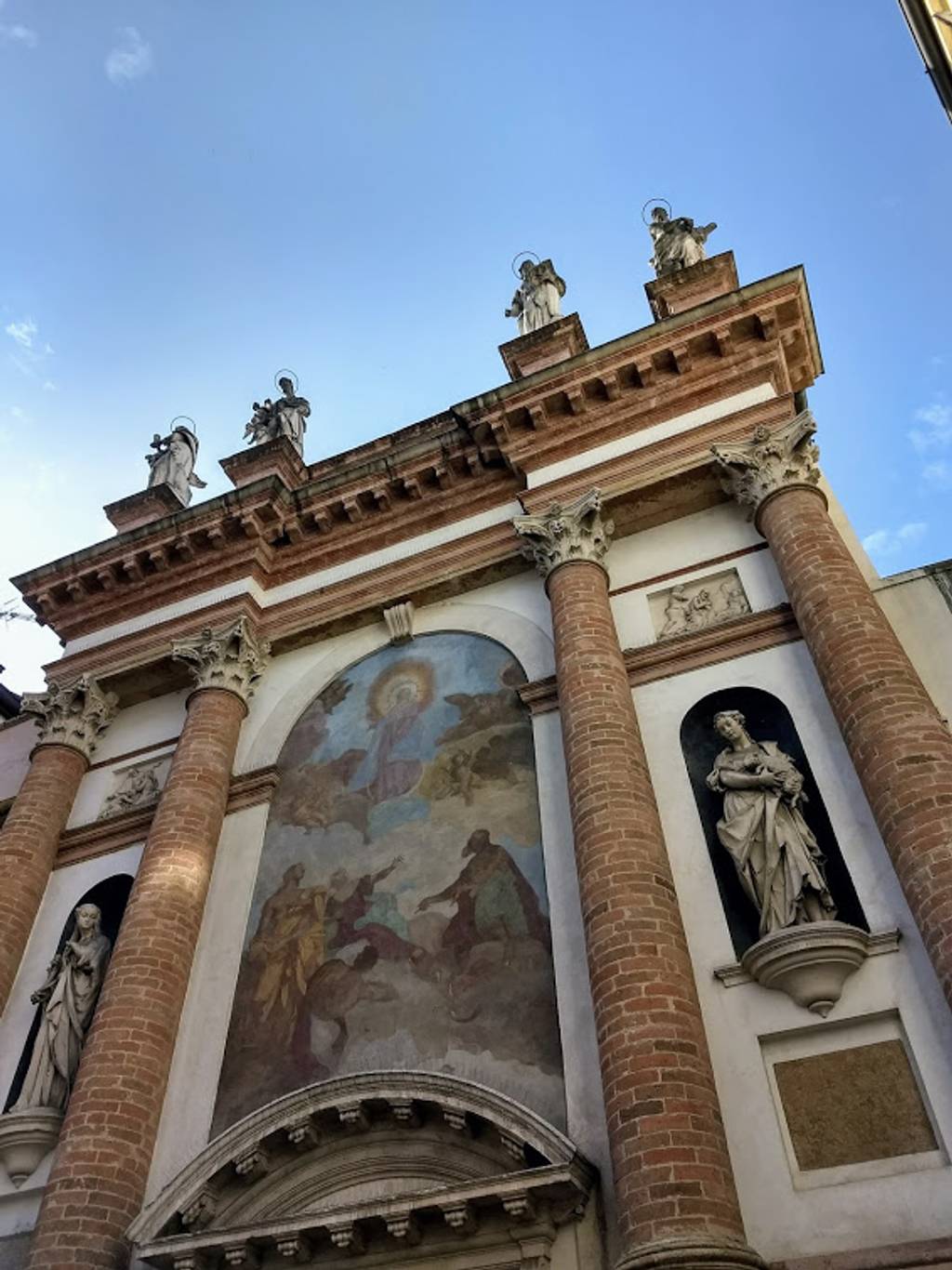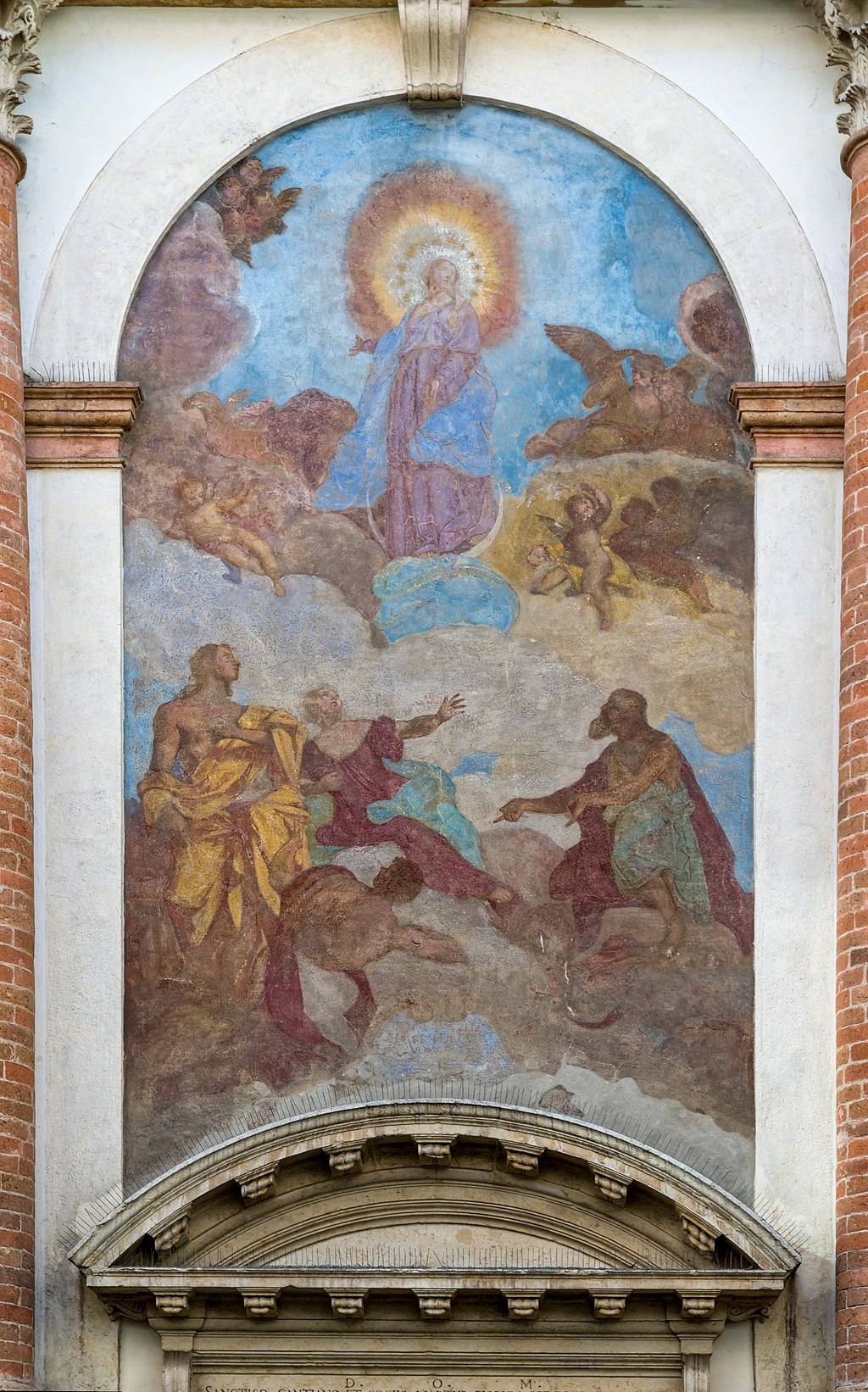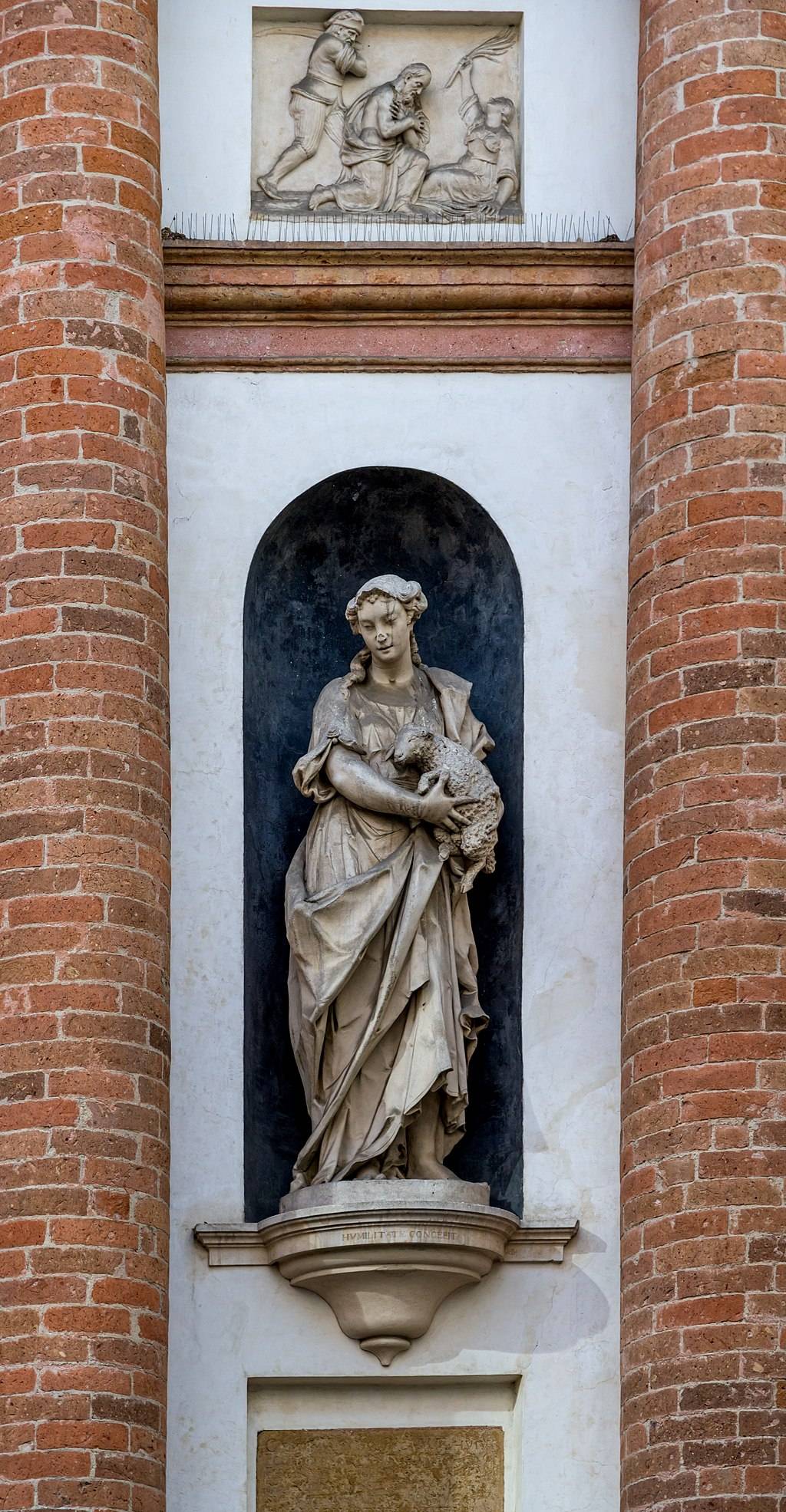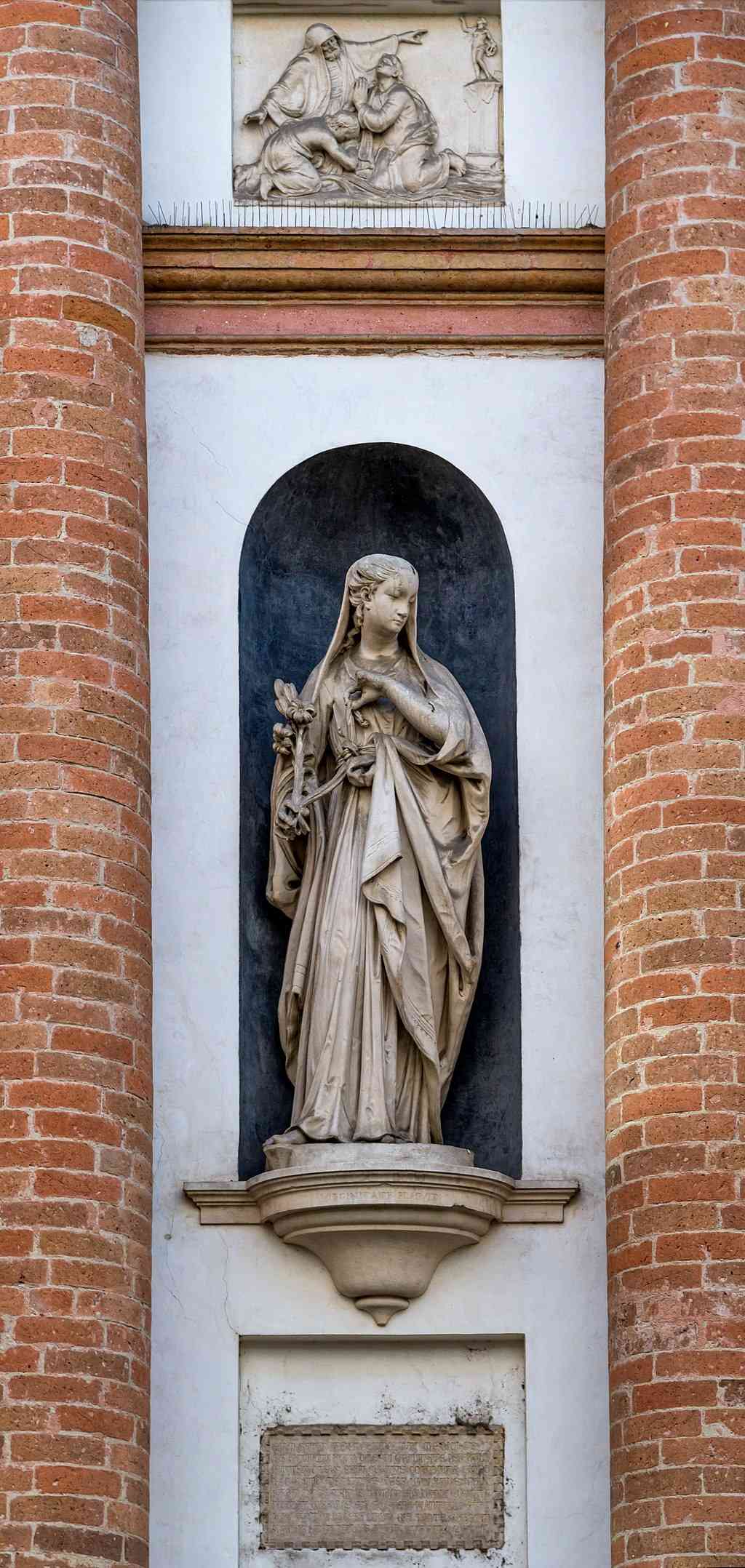Church of San Canziano
One of the oldest churches in the city, also popularly known as the Church of Santa Rita, it is historically a place of faith and meditation.
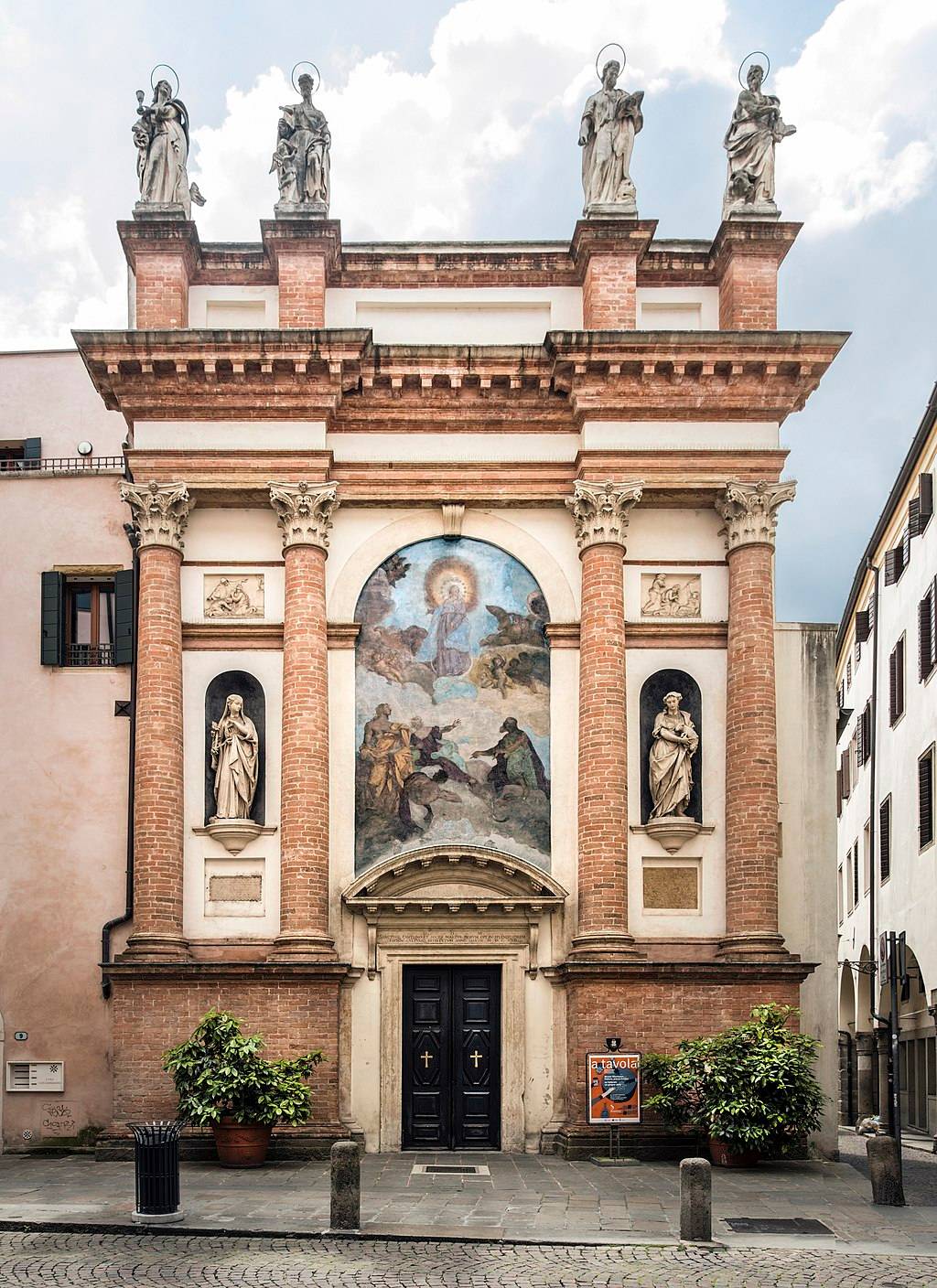
Just off the square on the southeast, in Via San Canziano, is a beautiful namesake church of medieval origins. The Church of San Canziano was mentioned in the city chronicles starting from 1034. The primitive church was severely damaged by the disastrous earthquake of 1117 and the terrible fire of 1174. Its reconstruction and expansion were completed only in 1617, thanks to the inheritance left by Don Cesare Mantua, the Church’s parish priest for over 27 years.
The church was dedicated to holy brothers Cantius, Cantianus, and Cantianilla, martyrs of the Patriarchate of Aquileia, who died on May 31, 304.
The elegant facade in alternating shades of terracotta and plaster has long been improperly attributed to Andrea Palladio, a work now attributed to Vincenzo Dotto, a Paduan architect and cartographer who lived in the sixteenth century. Its design comprises four semi-columns resting on a high base and equipped with Corinthian-style capitals. The two side niches house the statues of Humility and Virginity, sculpted by Antonio Bonazza. Above the statues, two eighteenth-century bas-reliefs show the scenes of the martyrdom of the Saints, while below the statues, there is a plaque dedicated to the doctor Bartolomeo Campo and an inscription that recalls the bequest of Don Cesare Mantova for the Church.
A large fresco dominates the facade’s centre, depicting The Immaculate Conception, a seventeenth-century work of the French painter Guy Louis II Vernansal. On the attic are the statues of the Four Evangelists, works by Pietro Danieletti.
Inside, on the sides of the main altar, there are terracotta statues within niches of the saints Agnes and Henry, on the left, and on the right side of Anne and Jerome, all attributed to the Trentino sculptor Andrea Briosco (1470-1532). On the left wall, three altarpieces display moments from the life of Saint Charles, Saint Anthony and Saint Rita of Cascia. The cult of Saint Rita was introduced in this church at the beginning of the twentieth century and is still particularly alive today. For the Paduans, in fact, the Church of Saint Cantianus is the church of Saint Rita.
The church is entrusted to the priests of Legionari di Cristo, a male congregation of pontifical rights. It is the only church in the diocese of Padua where the celebrations take place in the 1962 form of the Roman rite. Every Sunday at 11.00 it celebrates the Tridentine Mass. Once the most widely used Eucharistic liturgy in the world since it was promulgated by Pope Pius V in 1570, it was replaced after the Council Vatican II of 1969 and practically disappeared.
We welcome all contributions, no matter how small. Even a spelling correction is greatly appreciated.
All submissions are reviewed before being published.
Continue to changelog-

© 'Chiesa di San Canziano di Padova' by Camelia.boban is licensed under CC BY-SA 4.0 Attribution copied to clipboard Failed copying attribution to clipboard -

© 'Chiesa di Canziano' by joergens.mi is licensed under CC BY-SA 4.0 Attribution copied to clipboard Failed copying attribution to clipboard -

© 'Chiesa di Canziano' by joergens.mi is licensed under CC BY-SA 4.0 Attribution copied to clipboard Failed copying attribution to clipboard -

We welcome all contributions.
All submissions are reviewed before being published.
We welcome all contributions, no matter how small. Even a spelling correction is greatly appreciated.
All submissions are reviewed before being published.
Continue to changelogWe welcome all contributions, no matter how small. Even a spelling correction is greatly appreciated.
All submissions are reviewed before being published.
Continue to changelogWe welcome all contributions, no matter how small. Even a spelling correction is greatly appreciated.
All submissions are reviewed before being published.
Continue to changelogCategory
Cost
-
64 m
Piazza delle Erbe, one of the two squares that embrace the Palazzo della Ragione, is the temple of the Spritz cult and one of the most popular socializing places in Padua.
-
95 m
Palazzo Moroni, the usual name for the Municipal Buildings, is a complex of buildings in the city’s heart that house the offices of the Municipality of Padua.
-
97 m
The Palazzo del Bo in Padua is a fifteenth-century complex and the historic seat of the University of Padua, one of the oldest universities in the world.
-
125 m
A true miracle of architectural audacity and an impressive collection of fourteenth-century mural paintings, the only secular and civil commission executed by Giotto in Padua
-
The Palazzo della Ragione, built in the Middle Ages as the seat of the city courts, still hosts on the ground floor one of the oldest European markets

